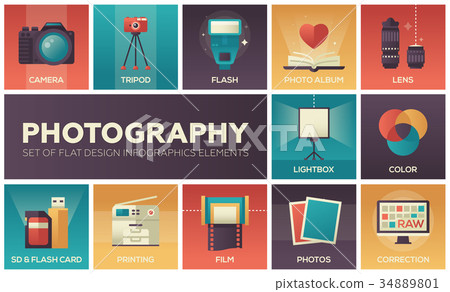What Every Digital Photographer Needs To Learn About Lights
What Every Digital Photographer Needs To Learn About Lights
Blog Article
Material Writer-Hinson Olsson
As a professional photographer, you understand that illumination can make or break your pictures. Recognizing the subtleties of both all-natural and man-made light is vital for recording the mood and quality you aim for in your work. Whether you're chasing the best golden hour glow or adjust your synthetic setups, grasping these components can boost your photography significantly. However there are common risks that lots of overlook, and acknowledging them can transform your method to every shoot. Allow's explore what you may be missing and just how it can impact your outcomes.
Comprehending Natural Light
Recognizing natural light is crucial for any type of digital photographer seeking to improve their job. It's the foundation of terrific digital photography, affecting mood, tone, and quality. When you fire outdoors, take notice of the moment of day. Suggested Studying -- quickly after sunrise and before sundown-- uses soft, warm light that can change ordinary scenes right into sensational images.
Don't ignore the power of overcast days. Cloud cover diffuses sunshine, developing a soft, even light that's perfect for portraits and macro digital photography. You'll locate colors appear this sort of lights without rough darkness.
Positioning matters, too. Constantly consider your topic's orientation to the source of light. If the sunlight's behind your subject, you might end up with a shape, which can be remarkable but mightn't be what you desire. On the other hand, direct sunlight can create unflattering darkness.
Explore angles; often, altering your perspective can yield incredible results. Usage Company photographer -natural reflectors, like water or sand, to jump light onto your topic, including dimension.
Mastering Artificial Light
Understanding fabricated light is important for digital photographers that wish to take their skills to the following degree. Whether you're making use of speedlights, workshop strobes, or continual lights, understanding just how to control these resources can considerably boost your pictures.
Beginning by acquainting on your own with the essentials of light quality, instructions, and color temperature. Experiment with different modifiers like softboxes, umbrellas, or grids to control the soft qualities or cruelty of the light.
You'll find that soft light usually produces flattering results, while harsher light can add dramatization and deepness. Don't shy away from shadows; they can enhance the three-dimensionality of your topics.
Pay close attention to the positioning of your lights. A light positioned also near your subject can develop uncomplimentary results, while too away can lead to a lack of information. Use a light meter or your video camera's pie chart to ensure you're subjecting appropriately.
Finally, keep in Read Alot more that fabricated light can be mixed with ambient light for creative effects. Stabilizing these sources might take practice, but once you understand it, your digital photography will truly shine.
Techniques for Different Circumstances
When you step into various capturing circumstances, adjusting your lighting strategies is crucial for catching the very best photos. For exterior portraits, utilize the golden hour-- early morning or late afternoon light-- to soften shadows and boost skin tones.
If it's a severe lunchtime sun, consider making use of a reflector to jump light back onto your subject or look for shaded areas for a more even exposure.
In low-light situations, like indoor occasions, enhance your ISO and utilize a vast aperture to let in even more light. A tripod can help eliminate electronic camera shake, permitting longer exposures without obscuring.
If you're shooting at night, trying out off-camera flash to create dynamic lighting and deepness in your photos.
For product photography, use diffused illumination to prevent rough representations. Softboxes or light outdoors tents can aid achieve this impact.
When photographing landscapes, take into consideration the instructions of light and time of day, as it can considerably change the state of mind of your shot.
Constantly prepare to change your settings and positioning based upon the circumstance, as versatility is essential to grasping lighting in digital photography.
Verdict
To conclude, understanding lighting is crucial to elevating your photography skills. Welcome natural light's charm during gold hour, and do not shy away from explore fabricated light techniques. By adjusting your strategy to various situations, you'll capture spectacular images that reverberate with feeling and quality. Remember, the appropriate lighting can transform a normal shot into something amazing, so maintain practicing and fine-tuning your understanding of both all-natural and artificial light. Satisfied shooting!
